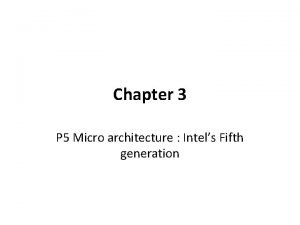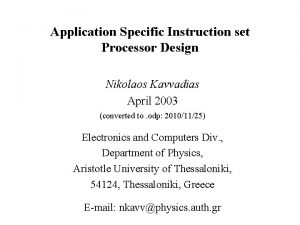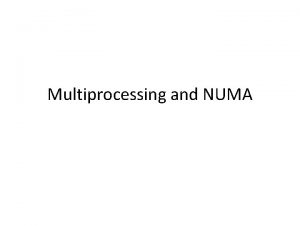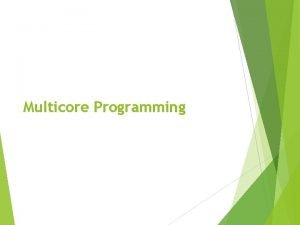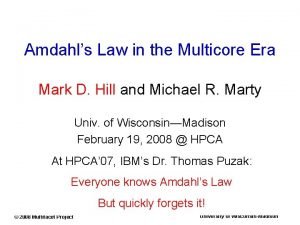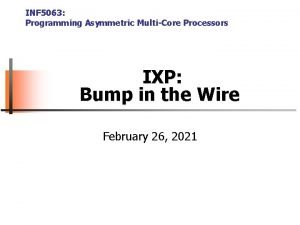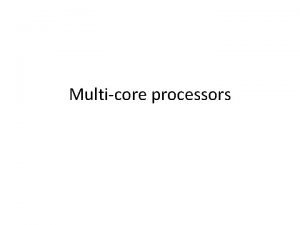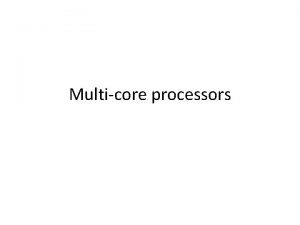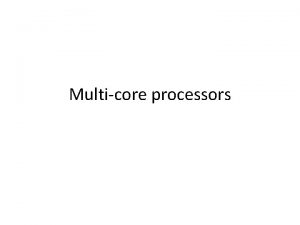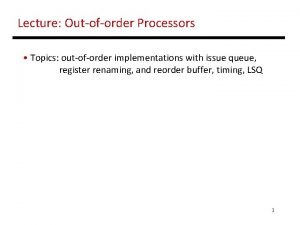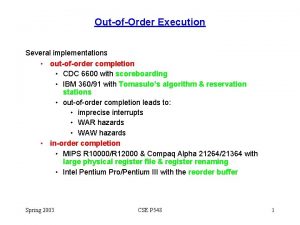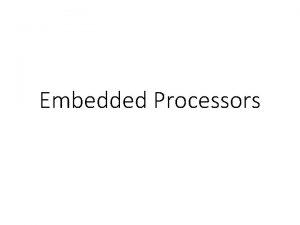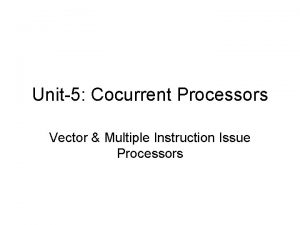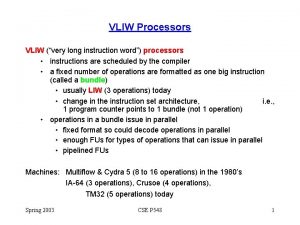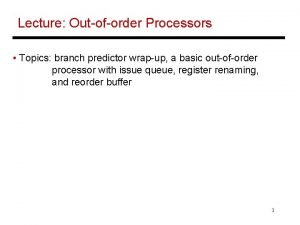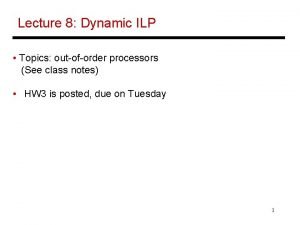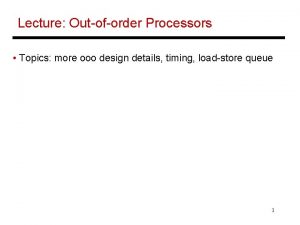Multicore processors Processor development till 2004 Outoforder Instruction



















- Slides: 19

Multi-core processors

Processor development till 2004 Out-of-order Instruction scheduling 2

Why multi-core ? • Difficult to make single-core clock frequencies even higher – heat problems • Deeply pipelined circuits: – heat problems, needs special cooling arrangements – Intel’s Net. Burst architecture was not continued • Many new applications are multithreaded • General trend in computer architecture (shift towards more parallelism) 3

Why multi-core ? 4

Single-core computer 5

Single-core CPU chip the single core 6

Multi-core architectures Replicate multiple processor cores on a single die. Core 1 Multi-core CPU chip Core 2 Core 3 Core 4 7

Multi-core processor

Multi-core CPU chip • The cores fit on a single processor socket • Also called CMP (Chip Multi-Processor) c o r e 1 2 3 4 9

The cores run in parallel thread 1 thread 2 thread 3 thread 4 c o r e 1 2 3 4 10

Within each core, threads are time-sliced (just like on a uniprocessor) several threads c o r e 1 2 3 4 11

Interaction with the Operating System • OS perceives each core as a separate processor • OS scheduler maps threads/processes to different cores • Most major OS support multi-core today: Windows, Linux, Mac OS X, … 12

Instruction-level parallelism • Parallelism at the machine-instruction level • The processor can re-order, pipeline instructions, split them into microinstructions, do aggressive branch prediction, etc. • Instruction-level parallelism enabled rapid increases in processor speeds over the last 15 years 13

Thread-level parallelism (TLP) • This is parallelism on a more coarser scale • Server can serve each client in a separate thread (Web server, database server) • A computer game can do AI, graphics, and a physicsrelated computation in three separate threads • Single-core superscalar processors cannot fully exploit TLP • Multi-core architectures are the next step in processor evolution: explicitly exploiting TLP 14

General context: Multiprocessors • Multiprocessor is any computer with several processors • SIMD – Single instruction, multiple data – Modern graphics cards • MIMD Lemieux cluster, Pittsburgh supercomputing center – Multiple instructions, multiple data 15

Multiprocessor memory types • Shared memory: In this model, there is one (large) common shared memory for all processors • Distributed memory: In this model, each processor has its own (small) local memory, and its content is not replicated anywhere else 16

Multi-core processor is a special kind of a multiprocessor: All processors are on the same chip • Multi-core processors are MIMD: Different cores execute different threads (Multiple Instructions), operating on different parts of memory (Multiple Data). • Multi-core is a shared memory multiprocessor: All cores share the same memory 17

What applications benefit from multi-core? • • • Database servers Web servers (Web commerce) Multimedia applications Scientific applications, CAD/CAM In general, applications with Thread-level parallelism (as opposed to instruction-level parallelism) are better supported Each can run on its own core 18

More examples • Editing a photo while recording a TV show through a digital video recorder • Downloading software while running an antivirus program • “Anything that can be threaded today will map efficiently to multi-core” • BUT: some applications difficult to parallelize 19
 God be with you until we meet again
God be with you until we meet again Explain an instruction issue algorithm of pentium processor
Explain an instruction issue algorithm of pentium processor Instruction set
Instruction set Speedy transactions in multicore in-memory databases
Speedy transactions in multicore in-memory databases Multicore packet scheduler:
Multicore packet scheduler: Multiprocessor and multicore
Multiprocessor and multicore Multiprocessor vs multicore
Multiprocessor vs multicore Amdahl's law in the multicore era
Amdahl's law in the multicore era Cache craftiness for fast multicore key-value storage
Cache craftiness for fast multicore key-value storage Pcie-1429
Pcie-1429 Obs multicore
Obs multicore Asymmetric multicore processing
Asymmetric multicore processing Sae international
Sae international Individualized instruction vs differentiated instruction
Individualized instruction vs differentiated instruction Direct instruction strategies
Direct instruction strategies Mtpdp 2004-2010
Mtpdp 2004-2010 Programming massively parallel processors
Programming massively parallel processors Non linear pipeline processors
Non linear pipeline processors Interrupt handling in arm processors
Interrupt handling in arm processors The history of cpu
The history of cpu

